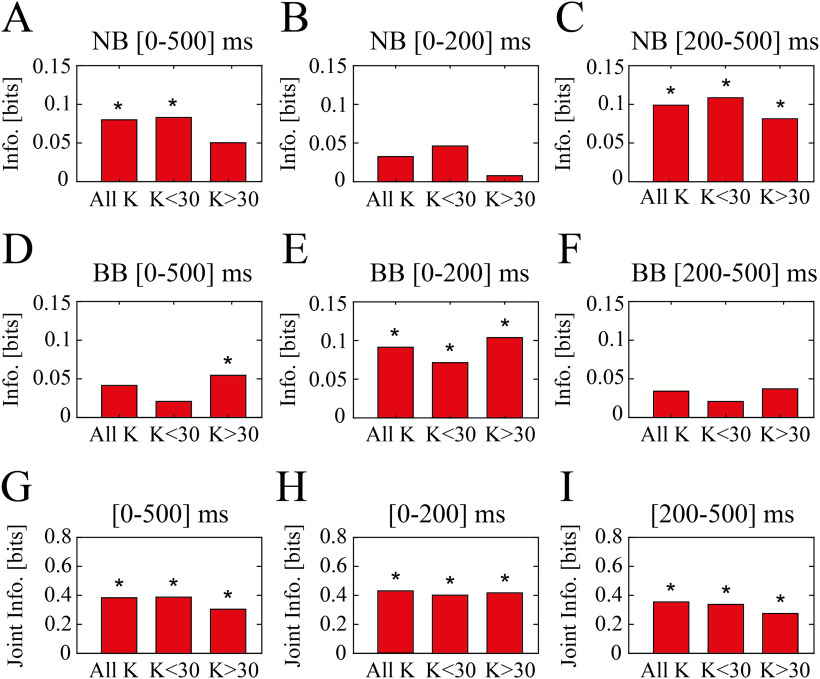Figure 3.
Information theory analysis reveal complementary encoding of visual contrast ranges. A, Information carried by PSD modulation with respect to K = 30 of narrow band about all contrast levels (all K), low range of contrasts (K < 30), and high range of contrasts (K > 30). PSD modulation was considered for the whole inter-contrast-reversal interval ([0–500] ms). Asterisks indicate mutual information values exceeding the significance threshold (p < 0.05; bootstrap test). B, Same as A but considering only 200 ms following contrast reversal. C, Same as A but considering the time window [200–500] ms following contrast reversal. D–F, Same as A–C for broad band. G, Joint mutual information carried by both narrow and broad band PSD modulation during the whole inter-contrast-reversal interval ([0–500] ms) about all contrast levels (all K), low range of contrasts (K < 30), and high range of contrasts (K > 30). H, Same as G but considering only 200 ms following contrast reversal. I, Same as G but considering a time window [200–500] ms following contrast reversal.

